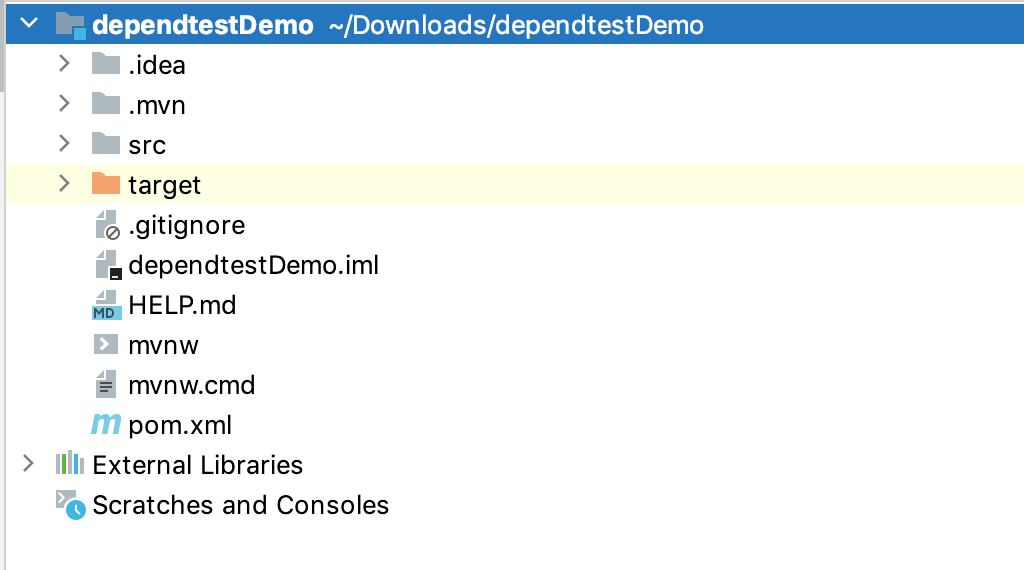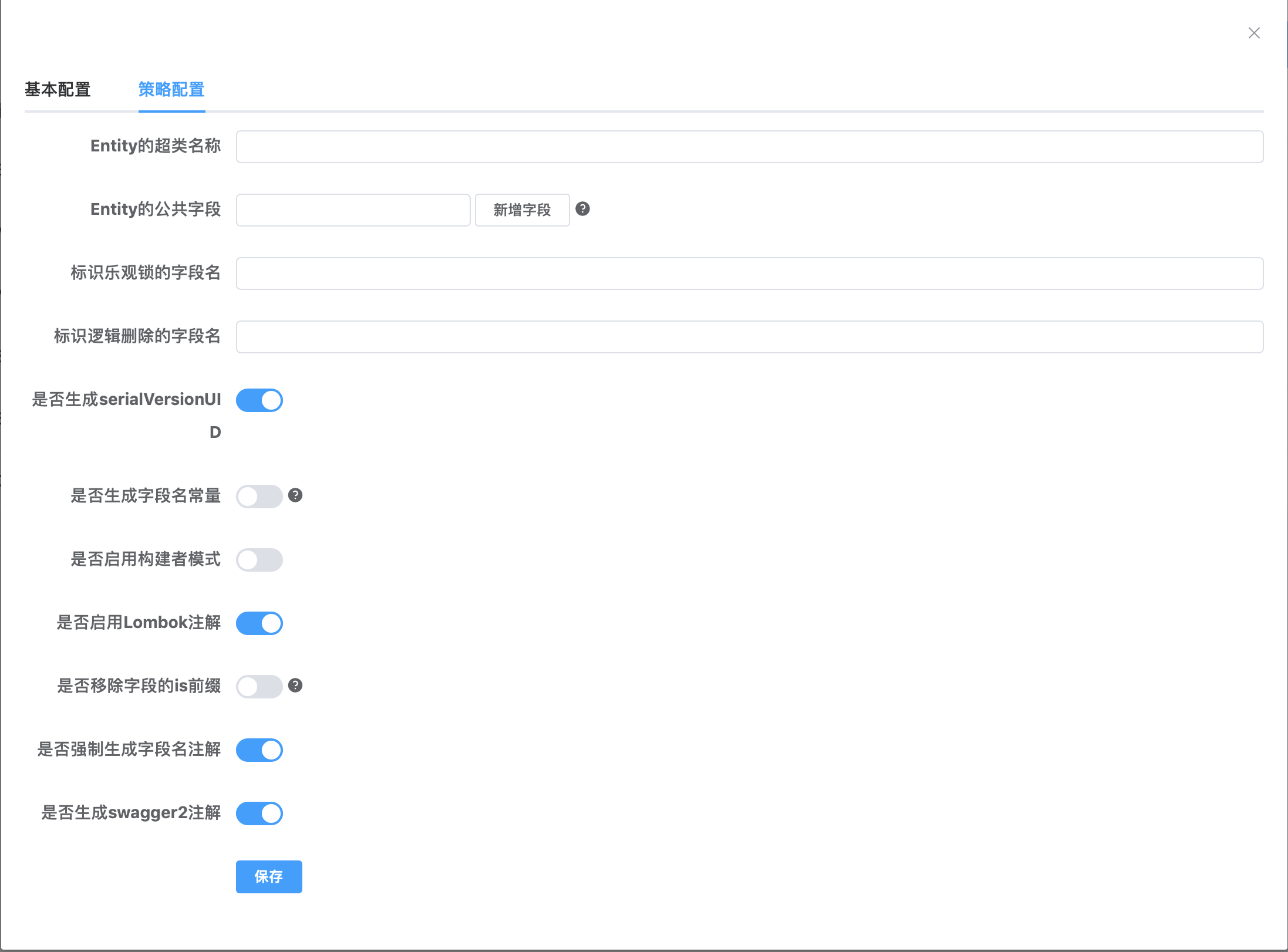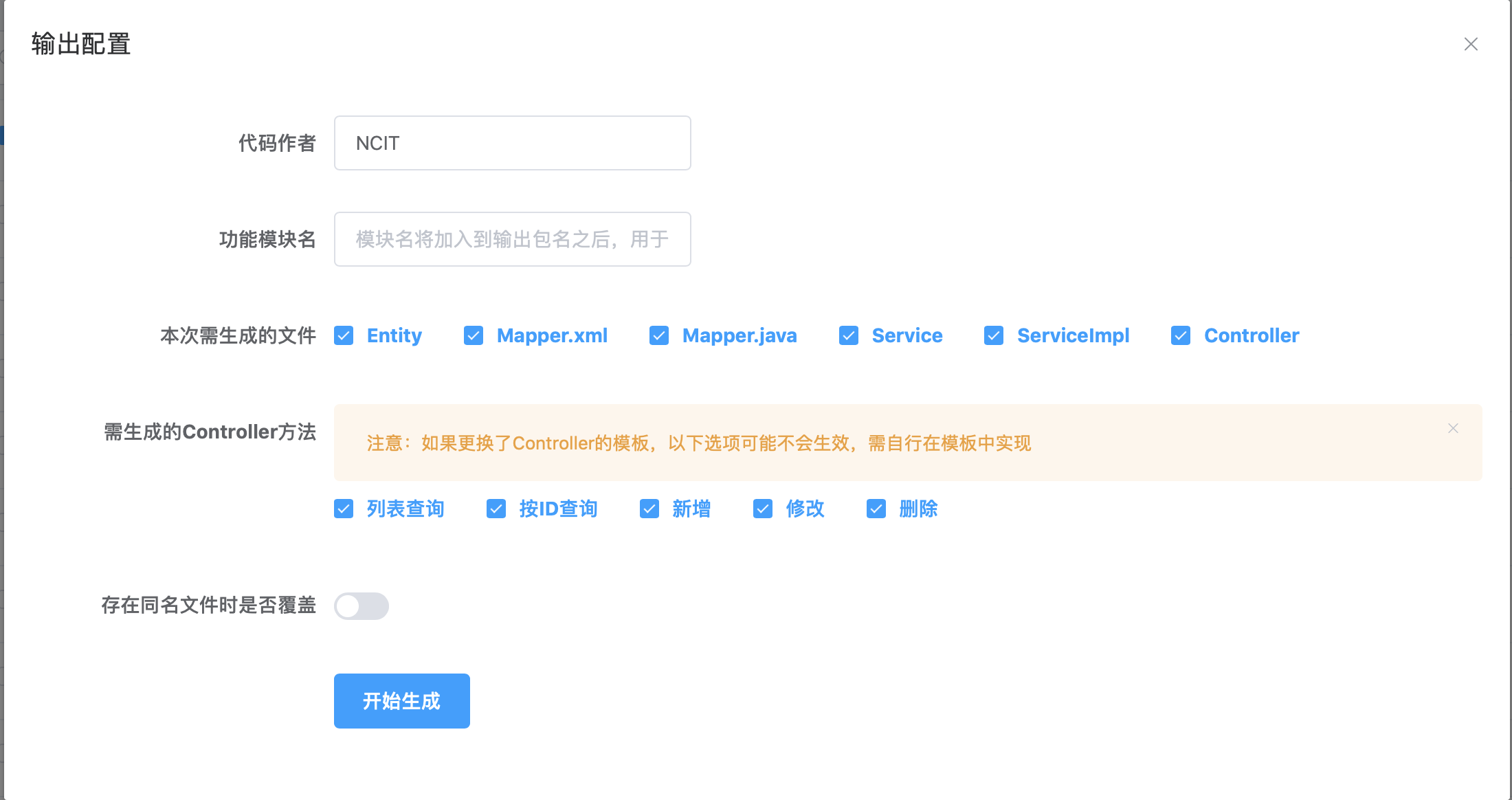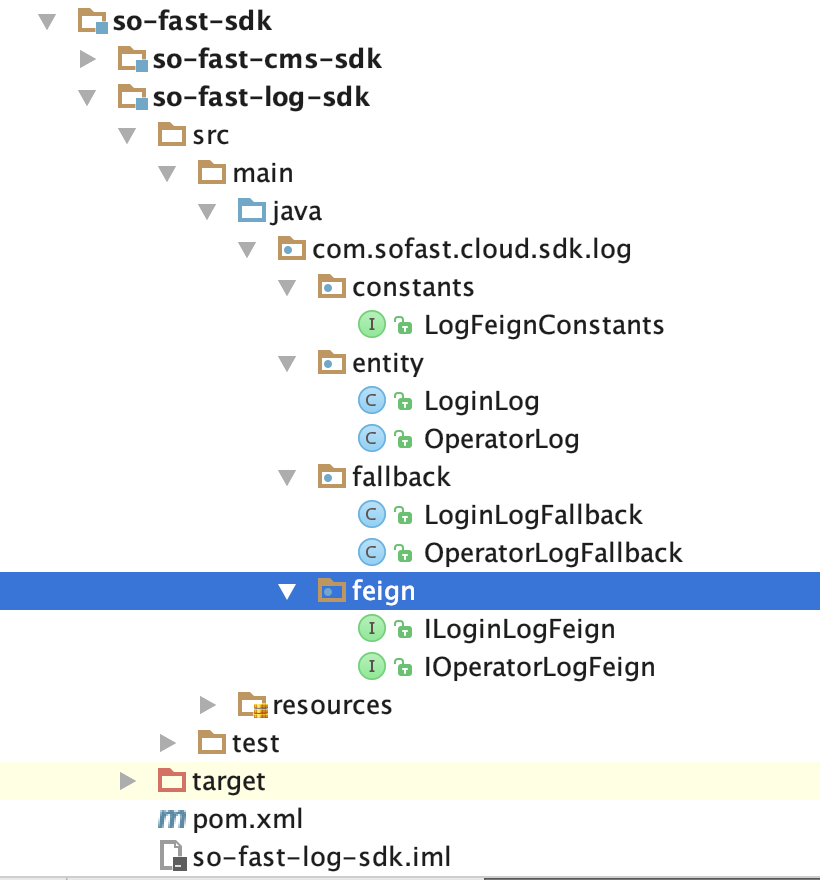后端开发
# 创建微服务工程
使用 sofast 框架进行微服务开发有两种模式:
- 使用源码工程进行开发【不再推荐使用】
- 基于 so-fast-cloud-dependencies 依赖管理进行开发【推荐】
# 基于 so-fast-cloud-dependencies 依赖开发
不需要下载工程源码框架,直接创建工程并添加 maven 依赖,即可轻松使用 sofast 框架进行微服务开发。
# 配置 maven 依赖
在 maven 配置文件 settings.xml 中添加私服认证配置
<server>
<id>sofast-proxy</id>
<username>ntt-read</username>
<password>(Nttdata)</password>
</server>
2
3
4
5
2
3
4
5
# 创建工程
使用 intellij idea 创建一个 maven 工程,例如:dependtestDemo

# Maven 依赖
<?xml version="1.0" encoding="UTF-8"?>
<project xmlns="http://maven.apache.org/POM/4.0.0" xmlns:xsi="http://www.w3.org/2001/XMLSchema-instance"
xsi:schemaLocation="http://maven.apache.org/POM/4.0.0 https://maven.apache.org/xsd/maven-4.0.0.xsd">
<modelVersion>4.0.0</modelVersion>
<groupId>com.example</groupId>
<artifactId>demo</artifactId>
<version>0.0.1-SNAPSHOT</version>
<name>demo</name>
<description>Demo project for Spring Boot</description>
<properties>
<java.version>1.8</java.version>
</properties>
<!-- 配置sofast 依赖管理 -->
<dependencyManagement>
<dependencies>
<dependency>
<groupId>com.sofast.cloud</groupId>
<artifactId>so-fast-cloud-dependencies</artifactId>
<version>2.2.0.RELEASE</version>
<type>pom</type>
<scope>import</scope>
</dependency>
</dependencies>
</dependencyManagement>
<dependencies>
<!-- rest api开发依赖包 -->
<dependency>
<groupId>com.sofast.cloud</groupId>
<artifactId>so-fast-web-starter</artifactId>
</dependency>
</dependencies>
<!-- maven插件配置 -->
<build>
<resources>
<resource>
<directory>src/main/resources</directory>
<filtering>true</filtering>
</resource>
</resources>
<plugins>
<plugin>
<groupId>org.apache.maven.plugins</groupId>
<artifactId>maven-compiler-plugin</artifactId>
<version>3.2</version>
<configuration>
<source>${java.version}</source>
<target>${java.version}</target>
<encoding>UTF-8</encoding>
</configuration>
</plugin>
</plugins>
</build>
<!-- 环境区分 -->
<profiles>
<profile>
<id>dev</id>
<activation>
<activeByDefault>true</activeByDefault>
</activation>
<properties>
<profileActive>dev</profileActive>
</properties>
</profile>
<profile>
<id>test</id>
<properties>
<profileActive>test</profileActive>
</properties>
</profile>
<profile>
<id>prod</id>
<properties>
<profileActive>prod</profileActive>
</properties>
</profile>
</profiles>
<!--指定代理私服镜像-->
<repositories>
<repository>
<id>sofast-proxy</id>
<url>http://101.133.164.217:8091/repository/maven-public/</url>
<snapshots>
<enabled>true</enabled>
<!--快照更新策略-->
<updatePolicy>always</updatePolicy>
</snapshots>
</repository>
</repositories>
</project>
2
3
4
5
6
7
8
9
10
11
12
13
14
15
16
17
18
19
20
21
22
23
24
25
26
27
28
29
30
31
32
33
34
35
36
37
38
39
40
41
42
43
44
45
46
47
48
49
50
51
52
53
54
55
56
57
58
59
60
61
62
63
64
65
66
67
68
69
70
71
72
73
74
75
76
77
78
79
80
81
82
83
84
85
86
87
88
89
90
91
92
93
94
95
96
97
2
3
4
5
6
7
8
9
10
11
12
13
14
15
16
17
18
19
20
21
22
23
24
25
26
27
28
29
30
31
32
33
34
35
36
37
38
39
40
41
42
43
44
45
46
47
48
49
50
51
52
53
54
55
56
57
58
59
60
61
62
63
64
65
66
67
68
69
70
71
72
73
74
75
76
77
78
79
80
81
82
83
84
85
86
87
88
89
90
91
92
93
94
95
96
97
# 配置 hosts
在开发时,为了防止因服务器 IP 变更而导致 maven 私服地址变化,特意通过 hosts 配置了 IP 和私有域名的映射。
配置如下(hosts 文件位置:linux 在 /etc/hosts;windowns 在 C:¥¥Windows¥System32¥drivers¥etc¥hosts
101.133.164.217 so-fast
101.133.164.217 sofast.com
101.133.164.217 maven.sofast
2
3
2
3
然而,现在域名服务商在逐步禁止私有域名的使用,因此,后续版本我们将取消 hosts 配置,直接使用 IP 地址的方式, 开发人员遇到无法访问时,可将 pom.xml 中的 sofast-proxy 标签对应的域名换成上述的 ip 地址。
# 新建启动文件
创建启动文件 XxxApplication.java
/**
* xx业务服务
* @Description: TODO
* @Date : 2021/6/17 18:53 PM
* @Author : NCIT
*/
@EnableSwagger2
@EnableSolFeign
@EnableDiscoveryClient
@SpringBootApplication(exclude = DruidDataSourceAutoConfigure.class)
public class XxxApplication {
public static void main(String[] args) {
SpringApplication.run(XxxApplication.class, args);
}
}
2
3
4
5
6
7
8
9
10
11
12
13
14
15
2
3
4
5
6
7
8
9
10
11
12
13
14
15
@EnableSwagger2 表示要启用 swagger api,swagger 的扫描路径需要在 bootstrap.yml 中进行配置
@EnableSolFeign 表示要启用 Feign,默认扫描路径为「com.sofast.cloud」,如果自定义包路径,请配置 basePackages 参数
@EnableDiscoveryClient:服务发现客户端
@SpringBootApplication (exclude = DruidDataSourceAutoConfigure.class) 表示不使用默认的 Druid 数据源加载,启用 sofast 框架自定义动态数据源配置
常规微服务需要同时开启以上 4 个注解。
注意:sofast 中使用的 orm 框架为 mybatis-plus,默认的 mapper 接口扫描路径为:@MapperScan ({"com.sofast.cloud..mapper."}),如果自定义开发时,创建了其他前缀包名,请在启动文件配置自定义 MapperScan 路径,包名规划请尽可能遵守 sofast 框架规范,减少参数设置
# 开发
创建目录结构以及开发,请参照开发规范 (opens new window),并推荐使用代码生成器直接进行通用代码框架生成,详细请参照下一章节代码生成器 (opens new window)
# 配置文件
│ │ └── resources
│ │ ├── application-dev.yml
│ │ ├── application-test.yml
│ │ ├── application-prod.yml
│ │ ├── banner.txt
│ │ ├── bootstrap.yml
│ │ ├── i18n
│ │ │ ├── messages.properties
│ │ │ └── messages_zh_CN.properties
│ │ ├── logback.xml
2
3
4
5
6
7
8
9
10
2
3
4
5
6
7
8
9
10
resources 目录下需要包含以下资源相关文件
application-xxx.yml 是各环境的自定义配置,需要开发者自行修改(目前所有配置文件均迁移到 nacos 配置中心)
bootstrap.yml 是通用配置文件,一般情况无需修改
i18n 是国际化资源文件
logback.xml 是日志打印配置文件
添加 bootstrap.yml 配置文件【必要文件】
# 修改为自己服务的端口号
server:
port: 9044
spring:
application:
name: @artifactId@
profiles:
active: @profileActive@
cloud:
nacos:
discovery:
# 服务注册地址
server-addr: ${NACOS_HOST:localhost}:${NACOS_PORT:8848}
group: SO_FAST_GROUP
config:
# 配置中心地址
server-addr: ${spring.cloud.nacos.discovery.server-addr}
# 配置文件格式
file-extension: yml
# 共享配置
group: SO_FAST_GROUP
shared-configs[0]:
data-id: application-${spring.profiles.active}.${spring.cloud.nacos.config.file-extension}
group: SO_FAST_GROUP
refresh: true
#swagger配置(修改为自己的包名)
swagger:
basePackage: com.sofast.cloud.test.demo
# 利用info端点,加入版本等信息(需要在pom中配置一下信息才可以使用)
#info:
# versin: @project.version@
# name: @project.artifactId@
# group: @project.groupId@
# description: @project.description@
# #还可以自定义信息
# author: NCIT.1SOL
2
3
4
5
6
7
8
9
10
11
12
13
14
15
16
17
18
19
20
21
22
23
24
25
26
27
28
29
30
31
32
33
34
35
36
37
38
39
2
3
4
5
6
7
8
9
10
11
12
13
14
15
16
17
18
19
20
21
22
23
24
25
26
27
28
29
30
31
32
33
34
35
36
37
38
39
下面对 application-dev.yml 配置详细介绍:
########### 本地开发用环境 ###############
# 数据源配置
spring:
datasource:
type: com.alibaba.druid.pool.DruidDataSource
driverClassName: com.mysql.cj.jdbc.Driver
druid:
webStatFilter:
enabled: true
exclusions: "*.js,*.woff,*.woff2,*.gif,*.jpg,*.png,*.css,*.ico,/druid/*,/v2/api-docs,/swagger*,/error_404"
statViewServlet:
enabled: true
# 设置白名单,不填则允许所有访问
allow:
url-pattern: /druid/*
# 控制台管理用户名和密码
login-username: sofast
login-password: sofast
dynamic:
druid:
# 初始连接数
initialSize: 5
# 最小连接池数量
minIdle: 10
# 最大连接池数量
maxActive: 20
# 配置获取连接等待超时的时间
maxWait: 60000
# 配置间隔多久才进行一次检测,检测需要关闭的空闲连接,单位是毫秒
timeBetweenEvictionRunsMillis: 60000
# 配置一个连接在池中最小生存的时间,单位是毫秒
minEvictableIdleTimeMillis: 300000
# 配置一个连接在池中最大生存的时间,单位是毫秒
maxEvictableIdleTimeMillis: 900000
# 配置检测连接是否有效
validationQuery: SELECT 1 FROM DUAL
testWhileIdle: true
testOnBorrow: false
testOnReturn: false
filter:
stat:
enabled: true
# 慢SQL记录
log-slow-sql: true
slow-sql-millis: 1000
merge-sql: true
wall:
config:
multi-statement-allow: true
datasource:
# 主库数据源
master:
url: jdbc:mysql://ncit.media.com:3306/tenant-sf-system?useUnicode=true&characterEncoding=utf8&zeroDateTimeBehavior=convertToNull&useSSL=true&serverTimezone=GMT%2B8
username: ENC(ZXWwnvHQB6JFW3vLii1p4U1VlYUuENL1szoreuhoqaAbmEKSDbtzqk7OHoimwWkDWJOtqzVx78eEg0wAmCuVRg==)
password: ENC(XwwjMe4aUDTGR/OfIh5PXHvWlSDI7zVinVUNu3Wgjl0nUvcWarN1WnG/zmXIVifjd/v8yi33Mo0pytU2o7222w==)
# 从库数据源
redis:
# 地址
host: ncit.media.com
port: 6379
# 密码
password: Ncit2017
# 连接超时时间
timeout: 15s
jedis:
pool:
# 连接池中的最小空闲连接
min-idle: 3
# 连接池中的最大空闲连接
max-idle: 10
# 连接池的最大数据库连接数
max-active: 50
# #连接池最大阻塞等待时间(使用负值表示没有限制)
max-wait: -1ms
database: 6
# 服务模块
devtools:
restart:
# 热部署开关
enabled: true
#mybatis-plus配置
mybatis-plus:
# 自定义xml文件路径
mapper-locations: classpath*:mapper/**/*Mapper.xml
# MyBaits 别名包扫描路径,通过该属性可以给包中的类注册别名,注册后在 Mapper 对应的 XML 文件中可以直接使用类名,而不用使用全限定的类名(即 XML 中调用的时候不用包含包名)
type-aliases-package: com.sofast.cloud.**.entity, com.sofast.cloud.**.domain.**
# mybatis执行器 该执行器类型会复用预处理语句(PreparedStatement)
executor-type: reuse
# 控制台打印sql
configuration:
log-impl: org.apache.ibatis.logging.stdout.StdOutImpl
global-config:
#是否控制台 print mybatis-plus 的 LOGO
banner: false
db-config:
select-strategy: not_null
# 逻辑删除配置
logic-delete-value: 1
logic-not-delete-value: 0
logic-delete-field: deleteFlg
#安全配置
sofast:
log:
operator:
# 配置审计日志的拦截范围
types: insert,update,delete
# 防止XSS攻击
xss:
# 过滤开关
enabled: false
# 排除链接(多个用逗号分隔)
excludes:
# 匹配链接
urlPatterns: /*
2
3
4
5
6
7
8
9
10
11
12
13
14
15
16
17
18
19
20
21
22
23
24
25
26
27
28
29
30
31
32
33
34
35
36
37
38
39
40
41
42
43
44
45
46
47
48
49
50
51
52
53
54
55
56
57
58
59
60
61
62
63
64
65
66
67
68
69
70
71
72
73
74
75
76
77
78
79
80
81
82
83
84
85
86
87
88
89
90
91
92
93
94
95
96
97
98
99
100
101
102
103
104
105
106
107
108
109
110
111
112
113
114
115
116
117
118
119
120
121
122
123
124
125
2
3
4
5
6
7
8
9
10
11
12
13
14
15
16
17
18
19
20
21
22
23
24
25
26
27
28
29
30
31
32
33
34
35
36
37
38
39
40
41
42
43
44
45
46
47
48
49
50
51
52
53
54
55
56
57
58
59
60
61
62
63
64
65
66
67
68
69
70
71
72
73
74
75
76
77
78
79
80
81
82
83
84
85
86
87
88
89
90
91
92
93
94
95
96
97
98
99
100
101
102
103
104
105
106
107
108
109
110
111
112
113
114
115
116
117
118
119
120
121
122
123
124
125
数据库、redis 请修改为自己的服务器地址
mybatis-plus 的配置,也请根据自己的包路径进行对应修改
# 启动服务
在启动服务之前,请先保证 nacos 已经正确运行。
直接使用 IDE 启动为服务,或者使用 maven 打包后,使用命令启动服务,观察 nacos 中服务是否注册成功。
通过该链接 http://localhost:9044/doc.html 可以查看 swagger api doc。
# 常见问题
1. 关于数据源
sofast 框架默认使用动态数据源插件,因此在启动类上,我们需要排除默认的 DruidDataSourceAutoConfigure 配置类,而使用动态数据源插件携带的配置类;在配置文件中,必须按照动态数据源的配置方式,配置 jdbc 连接,否则启动会报错。
如果该微服务中不需要连接数据库和 redis,那么请在 pom.xml 文件中将数据库依赖包排除。例如:
<dependency>
<groupId>com.sofast.cloud</groupId>
<artifactId>so-fast-web-starter</artifactId>
<exclusions>
<!-- 排除数据库 -->
<exclusion>
<groupId>com.sofast.cloud</groupId>
<artifactId>so-fast-mybatis-starter</artifactId>
</exclusion>
<!-- 排除数据库 -->
<exclusion>
<groupId>com.sofast.cloud</groupId>
<artifactId>so-fast-ds-starter</artifactId>
</exclusion>
<!-- 排除redis -->
<exclusion>
<groupId>com.sofast.cloud</groupId>
<artifactId>so-fast-redis-starter</artifactId>
</exclusion>
</exclusions>
</dependency>
2
3
4
5
6
7
8
9
10
11
12
13
14
15
16
17
18
19
20
21
2
3
4
5
6
7
8
9
10
11
12
13
14
15
16
17
18
19
20
21
2. 关于微服务路由配置
微服务开发完成后,需要通过网关进行统一转发访问,生产环境不允许直接暴露微服务端口;但是在本地开发时,可以直接访问微服务 api。
不通过网关代理,在微服务中是无法获取 token 及用户信息的,因此只能作为本机开发调试使用。
测试和生产环境,需要在 gateway 中配置动态路由,才可以通过网关来访问微服务,动态路由的配置可以参考网关中的示例。
3. 关于审计日志
sofast 框架默认提供了审计日志模块,通过数据库来记录日志信息,如果要使用该功能,那么需要在需要记录日志的方法上添加如下注解:
@LogOperator(title = "请填写方法的描述信息", type = Constants.SELECT_OPERATOR)
该注解有两个必填参数,一个 title,是描述这个方法是做什么的,一个 type,是标示这个方法的类别(类别有 6 种:增删改查,上传和下载)
4. 关于 swagger
sofast 框架默认提供 swagger api doc,需要在启动类上加入注解 @EnableSwagger2,以及在 bootstrap.yml 文件中配置扫描的包路径
#swagger配置(修改为自己的包名)
swagger:
basePackage: com.sofast.cloud.test.demo
2
3
2
3
服务启动后,通过 http://ip:port/doc.html 地址就可以访问 swagger
# 代码生成器
API 开发时首先使用代码生成器生成目录结构以及 class 主体。
# 代码生成器位置:
代码生成器工程为
so-fast-mpg,该工程有两种启动方式,1. 启动 SoFastGeneratorUiServerApplication 文件;2. 启动 TestSoFastGeneratorApplication 文件。两种方式均可。推荐使用方式 2,基于 test 方式进行启动。
so-fast-visual
└── so-fast-mpg
└── test
└── java
├── TestSoFastGeneratorApplication.java // 代码生成器
2
3
4
5
2
3
4
5
# 代码生成器配置:
public static void main(String[] args) {
GeneratorConfig config = GeneratorConfig.builder().jdbcUrl("jdbc:mysql://x.x.x.x:3306/so-fast")
.userName("db-username") // TODO 修改为自己数据库用户名
.password("db-password") // TODO 修改为自己数据库密码
.driverClassName("com.mysql.cj.jdbc.Driver")
.basePackage("com.sofast.biz") // TODO 设置要生成的业务包路径
.port(9102) // TODO 设置服务端口号
.build();
MybatisPlusToolsApplication.run(config);
}
2
3
4
5
6
7
8
9
10
2
3
4
5
6
7
8
9
10
# 运行:
右键执行 main 函数即可。服务启动之后,在浏览器打开地址 http://localhost:9102/

# 输出配置:


代码生成器提供对 Entity、Mapper、Service、Controller 的全部生成。so-fast 框架提供了模板,可通过上传模板进行自定义代码格式生成。
文件模板位置:
doc └── code_tpls ├── controller.java.btl ├── entity.java.btl ├── mapper.java.btl ├── service.java.btl └── serviceimpl.java.btl1
2
3
4
5
6
71
2
3
4
5
6
7
这里需要注意「输出路径」,一定要写正确,这里的输出路径是开发工程中的 package 路径,根据自己业务期望位置进行填写,比如我希望生成到 biz 目录下,并新建一个 test 业务模块,在 test 业务模块中创建自己的 Controller、Service、Mapper、Entity,我期望的目录结构如下:
biz
├── test
│ ├── controller
│ ├── entity
│ ├── mapper
│ └── service
│ └── impl
2
3
4
5
6
7
2
3
4
5
6
7
另外,针对 entity 和 controller 需要在页面进行一些设置,便于生成更符合要求的代码。
点击 Entity 行的「操作」按钮,打开「策略配置」选项,将启用 lombok、生成注解、生成 swagger2 注解选项打开并保存。

点击 Controller 行的「操作」按钮,打开「策略配置」选项,在「Controller 的超类名称」栏中填入 Controller 的父类「com.sofast.core.framework.web.controller.BaseController」,so-fast 要求所有的 Controller 类必须继承该父类。另外将「启用 REST 接口注解」选项打开并保存。

# 代码生成:
重新回到 Table 列表页面,选中需要操作的表,并点击「代码生成」按钮

在打开的页面中,输入以下内容,点击「开始生成」进行定制化代码生成。代码会自动生成到工程对应的包下。

注意:因为在「输出路径」已经填写好了,完整的路径,这里的「功能模块名」请不要填写任何东西!!!
如果需要进行重复生成时,可以开启文件覆盖选项,将之前的旧文件覆盖,但使用时要注意,别覆盖了已经编写好的代码!!!
点击「开始生成」后,我们来看下代码生成结果:

如我们预期一样,我们得到了正确的代码结构和代码文件。
常见问题:
代码生成器页面一段时间后,Table 列表显示不出来,控制台有 Exception 抛出,这个是因为数据库连接池问题,过一会刷新页面就正常了。
# 控制器 Controller
Controller 中不允许编写业务逻辑处理。
原则上禁止在 Controller 中使用事务注解
so-fast 框架规定控制器的职责是负责接受用户的请求,以及将业务处理结果返回给用户的流程控制。在控制器中不应该编码业务逻辑处理代码,业务逻辑代码应该编写在 Service 层,控制器只负责调用获取结果。
# Controller 类的定义
Controller 的定义需要遵循以下规范:
@RestController 注解,表示提供 rest api
@RequestMapping 注解,指定 api 的通用前缀 path,path 需遵循 REST 规范,使用名词来表示资源路径
@Api 注解,书写 swagger 文档
需要继承父类 BaseController
Good:
@Api(value = "字典数据操作API", tags = "字典数据")
@RestController
@RequestMapping("/dict/data")
public class DictDataController extends BaseController {
2
3
4
2
3
4
# Controller 中的 Method 定义
Method 的定义需要遵循以下编码规范:
使用 @GetMapping 或 @PostMapping 注解,指定 api 的 path,以及请求 Method。
使用 @LogOperator 注解,进行操作日志的记录
使用 @ApiOperation 注解,书写 swagger 文档
使用 R<?> 的泛型作为统一响应体
Good:
@ApiOperation(value = "根据ID查询")
@LogOperator(title = "字典管理-根据ID查询字典", type = Constants.SELECT_OPERATOR)
@GetMapping(value = "/{id}")
public R<DictData> getById(@PathVariable("id") String id) {
return R.data(iDictDataService.getById(id));
}
2
3
4
5
6
2
3
4
5
6
注意:R<?> 泛型需要根据实际返回值的类型进行具体化,不推荐直接写 R
# 业务逻辑 Service
Service 是 api 的业务核心逻辑所在。
Service 采用接口抽象方式。
so-fast 框架规定 Service 的职责是负责处理业务逻辑以及事务处理。
# Service 接口的定义
Service 接口的定义需要遵循以下规范:
接口名必须以「I」字母开头
接口必须 extends IService
Good:
/**
* 系统设置 服务类
* @Package: com.sofast.system.setting.service
* @Description: 设置系统名 logo 验证码开关等
* @Date : 2020-12-16
* @Author NCIT
*/
public interface ISysSettingsService extends IService<SystemSettings> {
2
3
4
5
6
7
8
2
3
4
5
6
7
8
# Service 实现类的定义
Method 的定义需要遵循以下编码规范:
使用 @Service 注解,标注业务层组件。
实现类必须 extends ServiceImpl,并 implements 父接口
Good:
/**
* 系统设置 服务实现类
*
* @Package: com.sofast.system.setting.service.impl
* @Description: 设置系统名 logo 验证码开关等
* @Date : 2020-12-16
* @Author NCIT
*/
@Service
public class SysSettingsServiceImpl extends ServiceImpl<SysSettingsMapper, SystemSettings> implements ISysSettingsService {
2
3
4
5
6
7
8
9
10
2
3
4
5
6
7
8
9
10
# 映射器 Mapper
使用代码生成器生成 Mapper 接口以及 Mapper.xml 文件
so-fast 框架的 ORM 基于 Mybatis-plus 实现,因此规范所有的业务 Mapper 必须继承 Mybatis-plus 的通用 Mapper。
# Mapper 接口的定义
Mapper 接口的定义需要遵循以下规范:
接口必须 extends BaseMapper
Good:
/**
* 系统设置 Mapper 接口
* @Package: com.sofast.system.setting.mapper
* @Description: 系统设置
* @Date : 2020-12-16
* @Author NCIT
*/
public interface SysSettingsMapper extends BaseMapper<SystemSettings> {
2
3
4
5
6
7
8
2
3
4
5
6
7
8
通用 Mapper 中已经实现了基本的增删改查功能,对于表的基本操作,不需要写 sql 文。
# SQL 文
对于复杂的 sql 处理,需要书写 SQL 文来提供业务处理。(不推荐写复杂的表关联,对于表关联等操作,建议在应用层处理)
当 mybatis-plus 提供的通用方法无法满足业务需求时,可以通过自定义方法和写 sql 文的方式来实现。
利用代码生成器,在 resources 目录下会生成 xml 文件
src/main/resources
└── mapper
├── biz
├── dict
│ ├── DictDataMapper.xml
│ └── DictTypeMapper.xml
├── setting
└── upms
2
3
4
5
6
7
8
2
3
4
5
6
7
8
按照如下格式规范编写 mybatis sql 文
<?xml version="1.0" encoding="UTF-8"?>
<!DOCTYPE mapper PUBLIC "-//mybatis.org//DTD Mapper 3.0//EN" "http://mybatis.org/dtd/mybatis-3-mapper.dtd">
<mapper namespace="com.sofast.system.dict.mapper.DictTypeMapper">
<sql id="selectColumn">
select id, dict_name, dict_type, status, remark, create_user, create_time, update_user, update_time
from sys_dict_type
</sql>
<sql id="orderColumn">
order by dict_type, update_time desc
</sql>
<select id="list" parameterType="DictTypeQueryVo" resultType="DictType">
<include refid="selectColumn"/>
<where>
<if test="dictTypeQueryVo.dictName != null and dictTypeQueryVo.dictName != ''">
AND dict_name like concat('%', #{dictTypeQueryVo.dictName}, '%')
</if>
<if test="dictTypeQueryVo.dictType != null and dictTypeQueryVo.dictType != ''">
AND dict_type like concat('%', #{dictTypeQueryVo.dictType}, '%')
</if>
<if test="dictTypeQueryVo.status != null and dictTypeQueryVo.status != ''">
AND status = #{dictTypeQueryVo.status}
</if>
</where>
<include refid="orderColumn"/>
</select>
</mapper>
2
3
4
5
6
7
8
9
10
11
12
13
14
15
16
17
18
19
20
21
22
23
24
25
26
27
28
29
30
2
3
4
5
6
7
8
9
10
11
12
13
14
15
16
17
18
19
20
21
22
23
24
25
26
27
28
29
30
select 节点的 id 属性值,对应 mapper 接口中的方法名,parameterType 对应方法的参数类型,resultType 对应方法的返回值。
在 Mapper 接口中自定义 list 方法。
public interface DictTypeMapper extends BaseMapper<DictType> {
public Page<DictType> list(Page<DictType> page, @Param("dictTypeQueryVo") DictTypeQueryVo dictTypeQueryVo);
}
2
3
4
5
2
3
4
5
在 Service 接口中自定义 list 方法。
public interface IDictTypeService extends IService<DictType> {
/**
* 条件查询列表
* @param page
* @param dictTypeQueryVo
* @return
*/
public Page<DictType> list(Page<DictType> page, DictTypeQueryVo dictTypeQueryVo);
2
3
4
5
6
7
8
9
2
3
4
5
6
7
8
9
在 ServiceImpl 中实现 Service 接口的 list 方法
@Override
public Page<DictType> list(Page<DictType> page, DictTypeQueryVo dictTypeQueryVo) {
return getBaseMapper().list(page, dictTypeQueryVo);
}
2
3
4
2
3
4
# 实体 Entity
Entity 是实体类,和数据库的表结构对应。
SoFast 框架中 Entity 由代码生成器自动生成,开发人员可基于定制需求进行修改。
# Entity 的规范
# Entity 类文件解耦合
Entity 类建议放到 feign sdk 中,然后通过 maven 进行依赖,不建议将 Entity 类直接放在具体服务中。
在微服务架构中,一般会存在服务之间的调用,此时被调用服务的返回值实体类需要调用方进行解析,如果放在 feign sdk 中,调用方可直接使用,非常方便,即可 feign 接口修改,也只需升级 maven 中的依赖即可。
当然,如果该服务没有任何外部调用,那 sdk 是非必须的,将 Entity 类直接放入服务中也可以。
# Entity 主键
在 SoFast 框架中,主键 id 默认是使用的 Mysql 自增主键,因此在 Entity 类中 id 字段需要追加 @TableId 注解,如下所示,注解 @TableId 的 type 属性需要指定成 IdType.AUTO,否则不会使用自增策略。
@ApiModelProperty(value = "主键")
@JsonFormat(shape = JsonFormat.Shape.STRING)
@TableId(value = "id", type = IdType.AUTO)
private Long id;
2
3
4
2
3
4
# 主键过大问题
当 Entity 的 id 值过大后,通常为超过 2 的 53 次方(9007199254740992),传递到前端页面后,会出现精度丢失的问题。
根本原因是因为 js number 类型的最大安全值问题。
解决方案:
增加 @JsonFormat 注解,将传递给前端的类型变成字符串。
@JsonFormat(shape = JsonFormat.Shape.STRING)
这种方案只是修改传递的 json 类型,并不需要修改 Entity 中的 id 类型和数据库的类型。
如果想要使用雪花算法或用户自定义主键,可通过修改 @TableId 注解实现。
// 使用雪花算法生成主键(数值或字符串类型)
@TableId(value = "id", type = IdType.ASSIGN_ID)
// 使用UUID生成主键(字符串类型,且不带"-")
@TableId(value = "id", type = IdType.ASSIGN_UUID)
// 开发人员自己生成主键
@TableId(value = "id", type = IdType.INPUT)
2
3
4
5
6
7
8
2
3
4
5
6
7
8
# 自动填充
在数据库插入或更新时,对于一些特定字段往往需要填充固定的信息,如创建者、创建时间、更新者、更新时间等。在 SoFast 中可以通过注解开启自动填充功能。
@ApiModelProperty(value = "创建者")
@TableField(fill = FieldFill.INSERT)
private Long createUser;
@ApiModelProperty(value = "创建时间")
@TableField(fill = FieldFill.INSERT)
private Date createTime;
@ApiModelProperty(value = "更新者")
@TableField(fill = FieldFill.INSERT_UPDATE)
private Long updateUser;
@ApiModelProperty(value = "更新时间")
@TableField(fill = FieldFill.INSERT_UPDATE)
private Date updateTime;
2
3
4
5
6
7
8
9
10
11
12
13
14
15
2
3
4
5
6
7
8
9
10
11
12
13
14
15
FieldFill.INSERT 只在 inset 时自动填充
FieldFill.INSERT_UPDATE 在 inset 和 update 时都可自动填充
在 SoFast 框架中,自动填充时由框架自动处理的,以下是实现类(内置在框架中),开发人员也可根据自己的需求进行定制实现。
@Component
@ConditionalOnClass(MetaObjectHandler.class)
public class SolMetaObjectHandler implements MetaObjectHandler {
private static final String CREAT_USER = "createUser";
private static final String CREAT_TIME = "createTime";
private static final String UPDATE_USER = "updateUser";
private static final String UPDATE_TIME = "updateTime";
private static final String DELETE_FLG = "deleteFlg";
@Autowired
private StrictFillProperties strictFillProperties;
/**
* 自动填充CREAT_USER、CREAT_TIME、删除FLG
*
* @param metaObject
*/
@Override
public void insertFill(MetaObject metaObject) {
// mybatis自动填充
Long userId = LoginUserContextHolder.getUserId();
this.strictInsertFill(metaObject, CREAT_USER, Long.class, userId);
this.strictInsertFill(metaObject, CREAT_TIME, Date.class, SolDateUtils.currentDate());
this.strictUpdateFill(metaObject, UPDATE_USER, Long.class, userId);
this.strictUpdateFill(metaObject, UPDATE_TIME, Date.class, SolDateUtils.currentDate());
this.strictInsertFill(metaObject, DELETE_FLG, Integer.class, Constants.DELETE_FLG_FALSE);
}
/**
* 自动填充UPDATE_USER和UPDATE_TIME
*
* @param metaObject
*/
@Override
public void updateFill(MetaObject metaObject) {
this.strictUpdateFill(metaObject, UPDATE_USER, Long.class, LoginUserContextHolder.getUserId());
this.strictUpdateFill(metaObject, UPDATE_TIME, Date.class, SolDateUtils.currentDate());
}
}
2
3
4
5
6
7
8
9
10
11
12
13
14
15
16
17
18
19
20
21
22
23
24
25
26
27
28
29
30
31
32
33
34
35
36
37
38
39
40
41
42
2
3
4
5
6
7
8
9
10
11
12
13
14
15
16
17
18
19
20
21
22
23
24
25
26
27
28
29
30
31
32
33
34
35
36
37
38
39
40
41
42
# 数据传输对象 Domain
Domain 并不是必要的
so-fast 框架规定在进行复杂的数据传输时,需要使用 Domain 进行规范定义和数据传输。
# Domain 的分类
so-fast 中 domain 分为 vo 和 dto 两类,vo 为视图模型,主要用于展现层;dto 是数据传输模型,主要用于服务层数据传输。
在 so-fast 框架中,vo 和 dto 并没有按照严格的模型规范来设计,主要是为了减少重复的 javabean 对象,必要的情况下,可以进行模型合并。一切为了在能清晰表达数据流的基础上的极简开发。
# 使用方式
例如,在多条件搜索的业务场景下,需要定义搜索条件的 vo 对象。
/**
* 字典类型查询条件
*
* @Package: com.sofast.system.dict.domain.vo
* @Description: 字典类型查询条件VO
* @Date : 2020/11/21 9:25 PM
* @Author : NCIT
*/
@ApiModel(value = "字典类型查询接口VO")
@Data
public class DictTypeQueryVo extends PageRequestBaseVo {
@ApiModelProperty(value = "字典名称")
private String dictName;
@ApiModelProperty(value = "字典类型")
private String dictType;
@ApiModelProperty(value = "状态(0正常 1停用)")
private String status;
}
2
3
4
5
6
7
8
9
10
11
12
13
14
15
16
17
18
19
20
21
22
2
3
4
5
6
7
8
9
10
11
12
13
14
15
16
17
18
19
20
21
22
对于有分页需求的必须 extends PageRequestBaseVo,PageRequestBaseVo 中定义了分页所需的通用条件,以及日期范围搜索的条件。
# Feign 接口开发
微服务间的相互调用需要开发 Feign 接口。
在 sofast 框架中,微服务间的 rpc 使用 Feign 来实现。
# SDK
Feign 接口需要提供给其他工程进行调用,因此 Feign 接口需要对外提供包括 url、入参、返回体等具体信息供其他服务直接使用,为避免重复定义,sofast 规定必须开发 sdk 工程,其规范如下:
需要创建对应微服务的 sdk
sdk 中定义好接口、url 常量、entity、feign 的熔断处理等
调用方和被调用方同时依赖该 sdk
Good:

# Feign 接口实现
sdk 开发好后,微服务需要依赖该 sdk,并实现接口逻辑:
Good:
依赖 sdk
<dependency>
<groupId>com.sofast.cloud</groupId>
<artifactId>so-fast-log-sdk</artifactId>
</dependency>
2
3
4
2
3
4
实现接口逻辑
@Slf4j
@RestController
@Api(tags = "操作日志远程调用")
public class OperatorLogFeignProvider implements IOperatorLogFeign {
@Autowired
IOperatorLogService iOperatorLogService;
@ApiOperation(value = "操作日志", notes = "操作日志保存")
@PostMapping(LogFeignConstants.FEIGN_OPERATOR_LOG)
@Override
public R<Boolean> save(@RequestBody OperatorLog operatorLog) {
return R.data(iOperatorLogService.save(operatorLog));
}
}
2
3
4
5
6
7
8
9
10
11
12
13
14
15
2
3
4
5
6
7
8
9
10
11
12
13
14
15
# LoginUserContextHolder
LoginUserContextHolder 是获取当前用户信息的上下文 Tip:该上下文中的数据是由 so-fast-web-starter 中的 LoginUserInfoFilter 进行初始化的; 如发现该上下文中无数据请先确认工程中是否使用了 so-fast-web-starter 程序包,如未使用请自行维护该上下文的生命周期
原则上所有 web 服务都必须使用 so-fast-web-starter 程序包
# setLoginUserInfo
设置当前线程中的登录用户信息 (未使用 so-fast-web-starter 时需要自行维护该数据)
// 目前LoginUserInfo中提供两个构造函数 // 无用户所属机构(web-starter中默认使用) LoginUserInfo loginUserInfo = new LoginUserInfo(userId, userName, roleList); // 包含用户所属机构 // LoginUserInfo loginUserInfo = new LoginUserInfo(userId, userName, roleList); LoginUserContextHolder.setLoginUserInfo(loginUserInfo); // PS:使用完毕之后记得清除当前用户数据 否则可能会在线程复用的场景会产生一些无法预料的问题1
2
3
4
5
6
7
8
91
2
3
4
5
6
7
8
9
# clear
清空当前线程中的登录用户信息数据
LoginUserContextHolder.clear()11# getLoginUserInfo
获取当前线程中的登录用户信息
LoginUserContextHolder.getLoginUserInfo() Return: LoginUserInfo { // 用户ID Long userId; // 登录用户名 Long userName; // 组织结构ID Long orgId; // 用户授权角色的编码集合 Long roleList; }1
2
3
4
5
6
7
8
9
10
11
121
2
3
4
5
6
7
8
9
10
11
12
# getUserId
获取当前线程中的登录用户 Id
LoginUserContextHolder.getUserId() Return: (Long) userId1
2
31
2
3
# getUserName
获取当前线程中的登录用户名(非 realName)
LoginUserContextHolder.getUserName() Return: (String) userName1
2
31
2
3
# getOrgId
获取当前线程中的登录用户所属机构(当前版本暂未支持)
LoginUserContextHolder.getOrgId() Return: (Long) orgId1
2
31
2
3
# getRoleList
获取当前线程中的登录用户的角色编码集合
LoginUserContextHolder.getRoleList() Return: (List<String>) roleList1
2
31
2
3